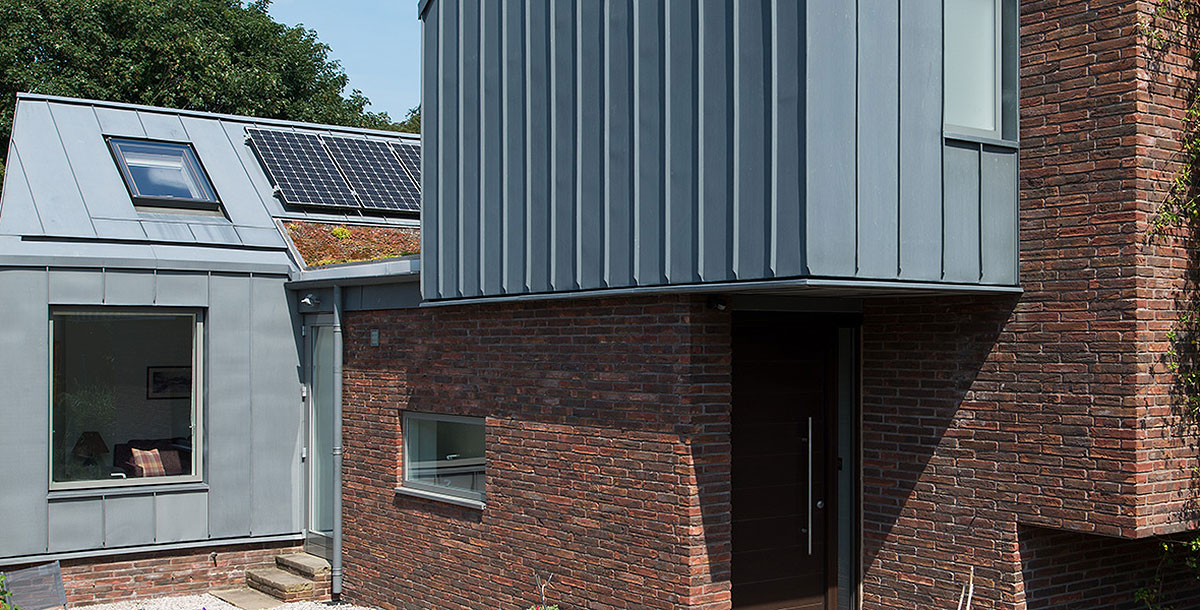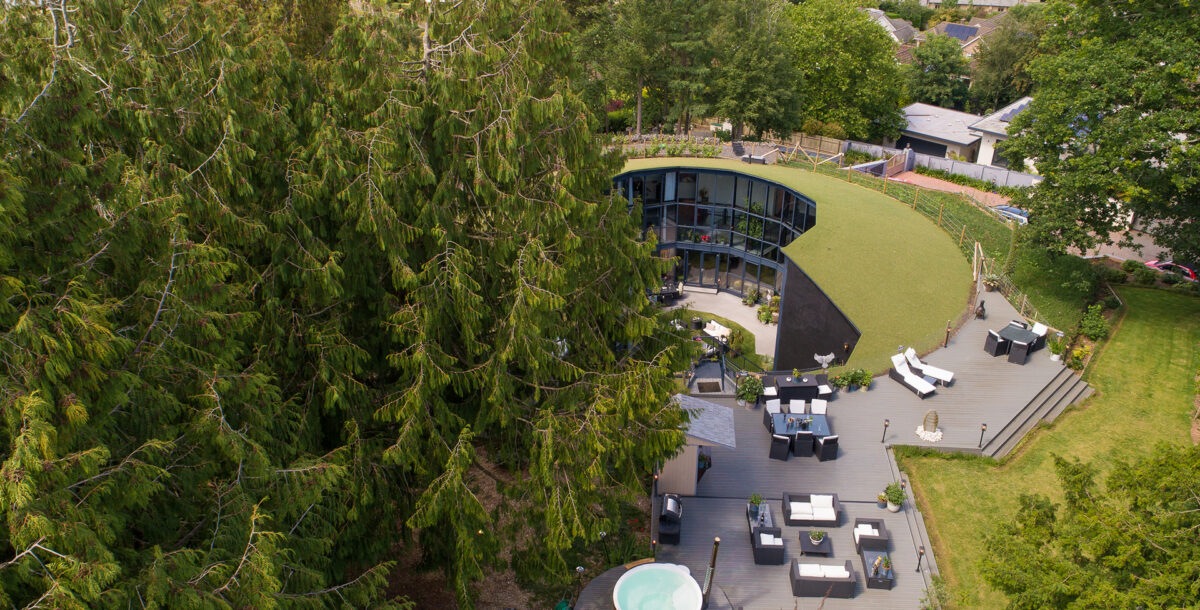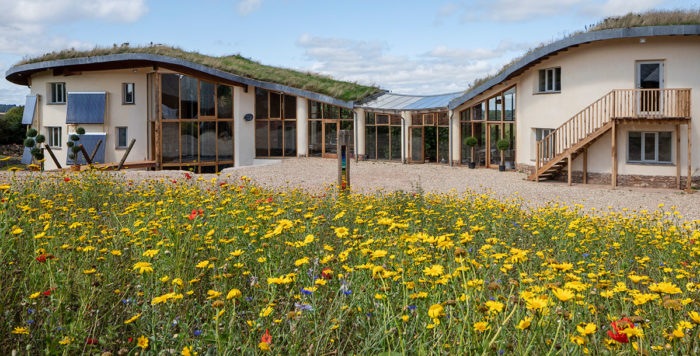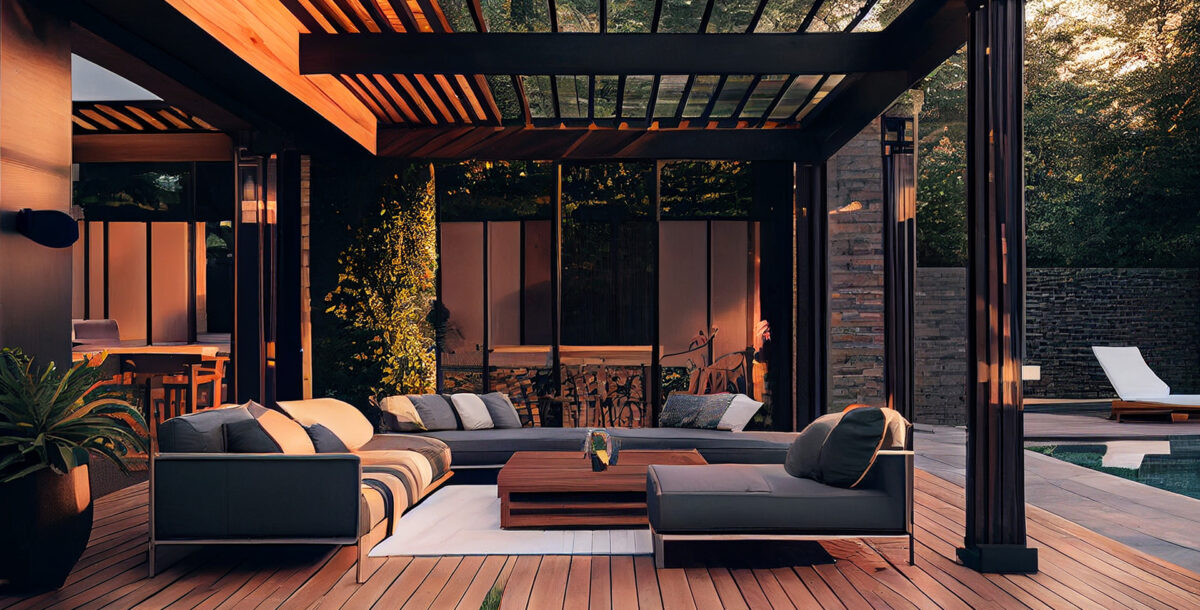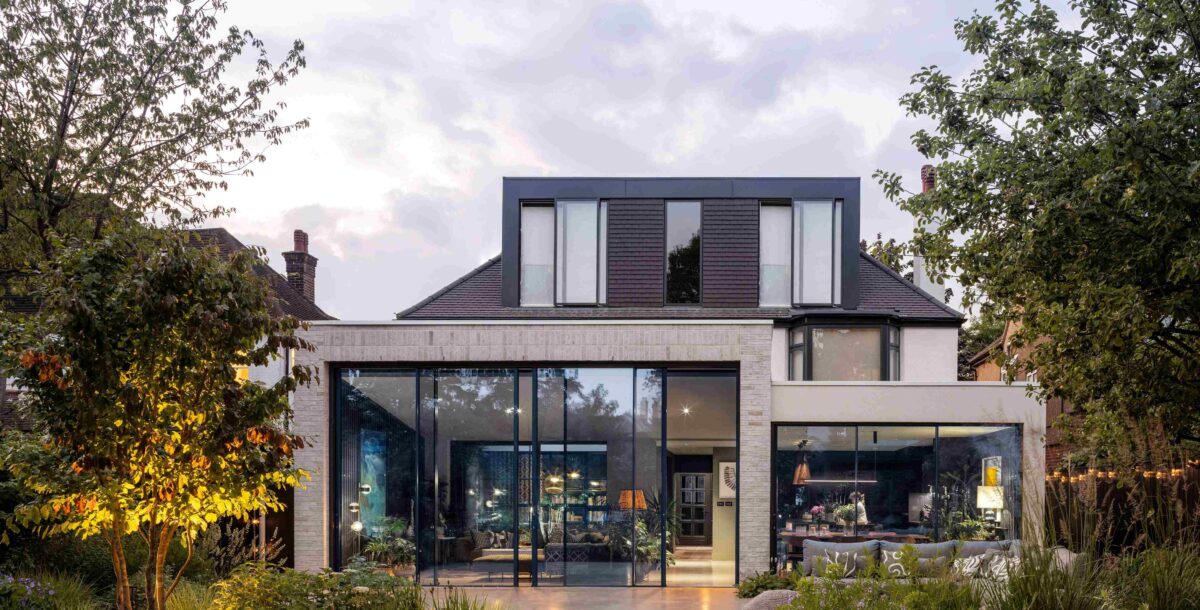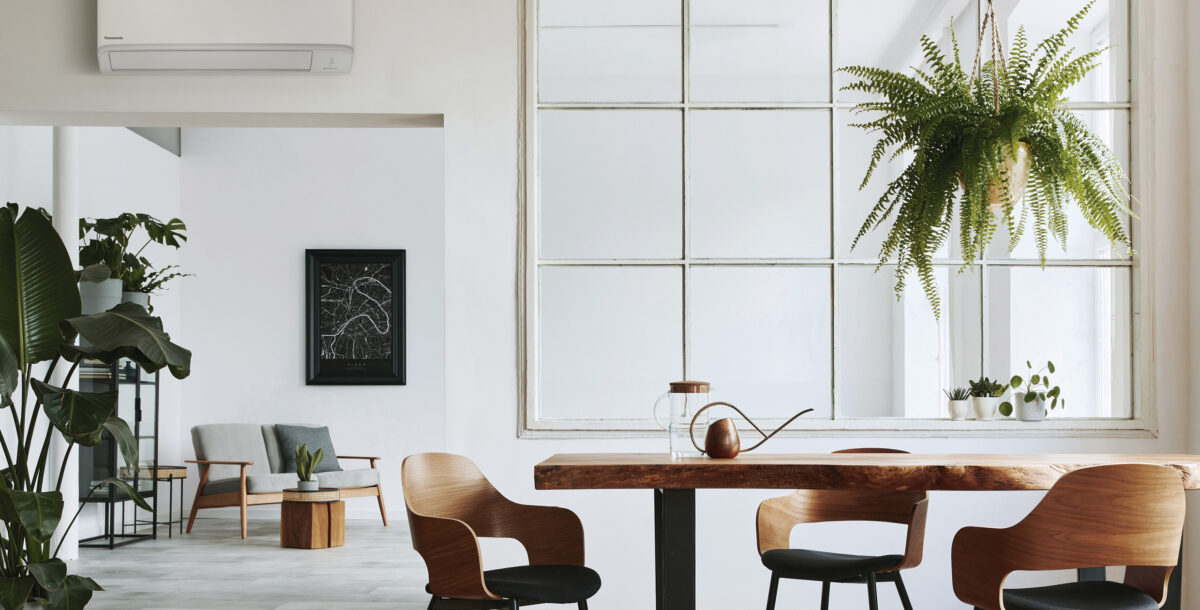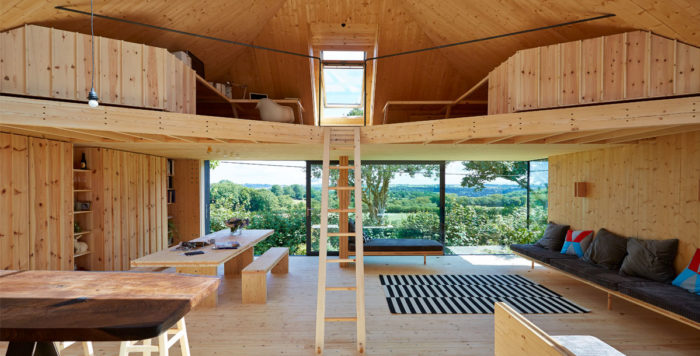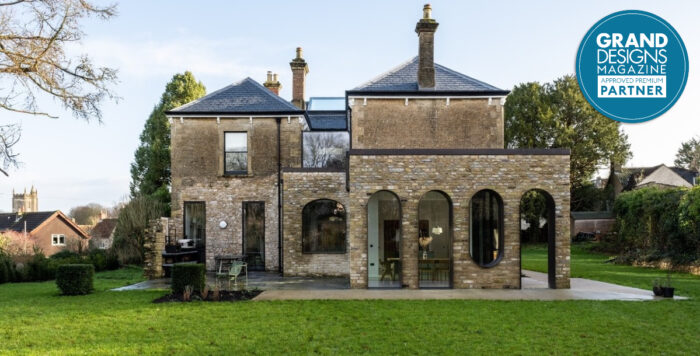how to choose a heating system for your self-build project
This comprehensive guide covers the key considerations when choosing heating systems
Modern technological advances make it easier than ever to stay stylishly cosy and energy efficient. Take these key considerations into account when deciding on your home’s low carbon heating systems.
Maintaining your home at a comfortable temperature throughout the colder months is a matter of creating, storing and circulating heat, and whether you’re self-building or renovating, the summer months can be the perfect time to have these systems installed.
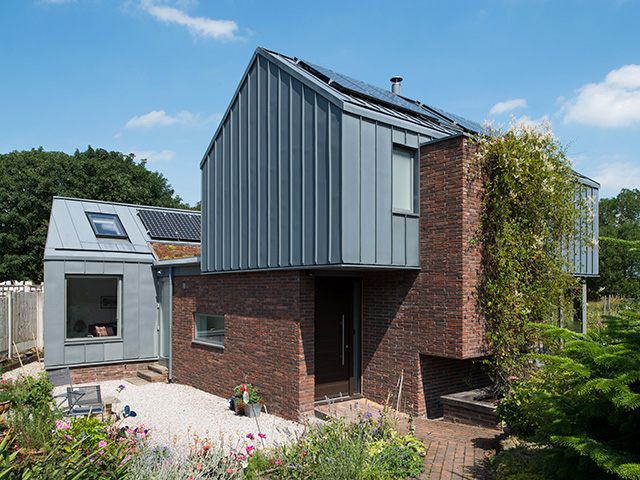
This new-build house by Proctor & Shaw achieves an extremely low carbon footprint thanks to an all-timber structure and highly efficient envelope, supported by a 3.2kW solar PV array and ground source heat pump
Boilers and water tanks
When weighing up product, installation and running costs, a mains gas boiler remains the cheapest fossil-fuel option for central heating. Your property’s size, its level of insulation and the number of bathrooms will influence how powerful it needs to be.
They should, generally, be fitted inside the property, on an exterior wall and vented via a flue. There are strict guidelines surrounding venting, including length and proximity to windows. Make sure you use a qualified Gas Safe installer and check their credentials on the Gas Safe website.
Condensing boilers recycle energy to reuse, so need less to heat water for a bath, shower or to warm your home via underfloor or in-wall heating systems. Well-insulated water tanks operate under mains pressure to supply your taps and shower and, as with condensing boilers, can also work with low-volume wet heating systems.
Energy efficient condensing boilers are compulsory for all new installations. When teamed with a well-insulated water tank they can be supplemented by solar thermal panels or an air source heat pump. Referred to as a system boiler, this arrangement is ideal for bigger homes and those with high demand. A more space efficient combi boiler does not require hot-water storage, as the water is heated on demand, but this precludes it from being used with renewables.
For many, a boiler is the first choice. But with a reduction in the use of fossil fuels an ever-more important consideration, it’s worth thinking about renewable methods and hi-tech control as well as becoming your own energy supplier.
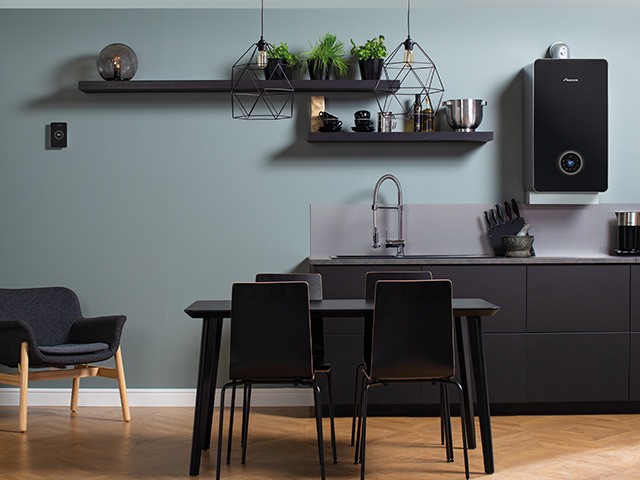
Photo: Greenstar Style boiler, Worcester Bosch
Ground source and air source heat
Heat pumps work through a process of heat exchange, drawing warmth from an outside source and using this energy to heat the water in your home, which can then power heating systems or be stored in an insulated tank for later use. To be most effective, heat pumps require a very well-insulated building.
Ground source heat pumps lie beneath the ground, drawing warmth from the earth, which means digging a trench or borehole in your outside space. They are often installed in conjunction with underfloor heating.
Air-source heat pumps are fitted outside at ground level or on brackets attached to an exterior wall. Unlike ground- source heat pumps, which work well in all seasons, they are less effective in winter and you may need a back-up source of warmth during the colder months.
Both types are powered by electricity and a well-insulated, airtight home is required for optimum efficiency.
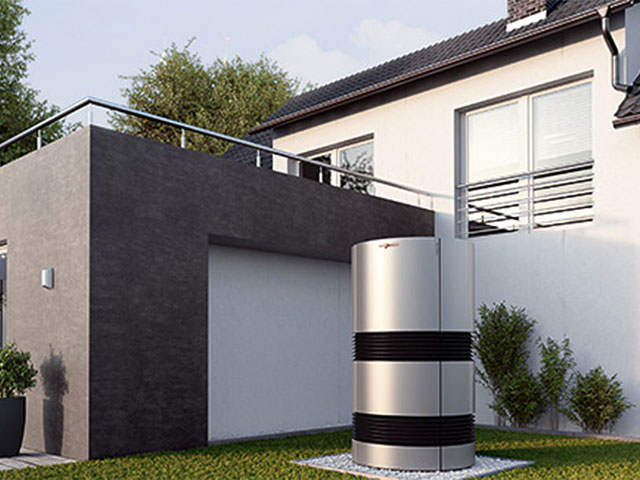
Viessmann’s Vitocal 300-A air source heating system is intended for installation in the garden, and has exceptional efficiency.
Solar panels
Photovoltaic (PV) solar panels are the most common renewableenergy system. Although government incentives are no longer applicable, you may find installation costs are less than you imagined. The Solar Trade Association has a list of installers.
Solar panels need to be positioned for maximum exposure to the sun and you’ll need a heat battery to store excess energy captured at the sunniest times. There are also mobile designs that follow the sun as it moves through the sky. ‘A ground-based GPS system allows panels to track the sun, so that the energy output matches the power demands of the household,’ says Melissa Briggs, director of international business development at Heliomotion.
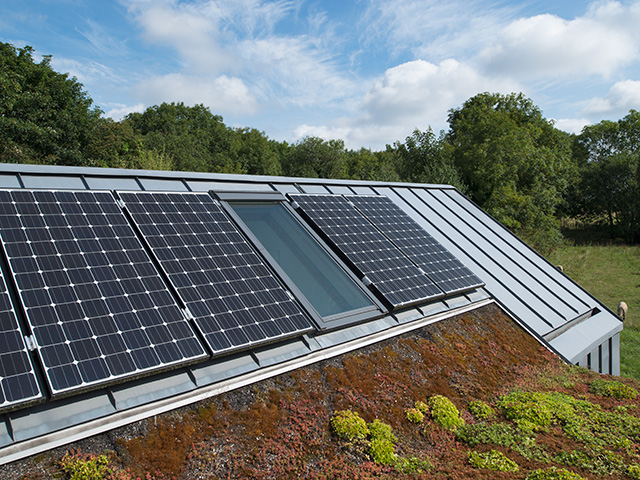
Photo: Proctor & Shaw
Radiators
Due to improvements in their construction and the materials they are made from, modern radiators are more efficient, using less water and heating up more quickly than their older counterparts.
Available in a variety of colours and designs, from contemporary flat panels to vintage-style models, try traditional column radiators or sleek, vertical designs in a vibrant colour to make a bold statement in your room.
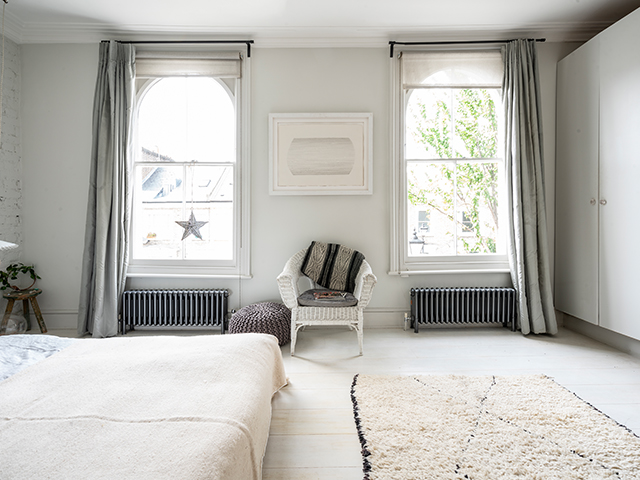
Photo: Bisque
Stoves
Whether traditional or modern, wood burning or multi fuel, a stove adds character and a focal point to an interior. ‘A solid fuel stove or fire can be installed almost anywhere, as long as there is a flue,’ says Dave Saunders, special projects engineer at Stovax. ‘The installation must also meet the requirements of both the product and building regulations.’
A stove adds character and a focal point to an interior. The installation must also meet the requirements of the product and the building regulations. Where you live in the UK will determine how big or small the flue needs to be, as building and ventilation requirements vary across the country. Check with your local council and building control office before fitting.
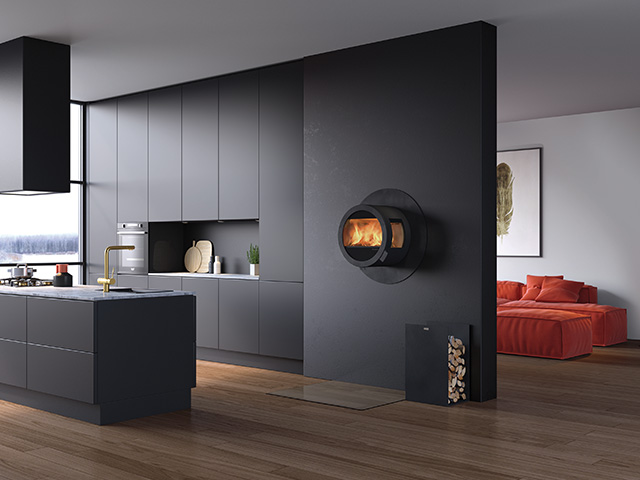
Photo: Nordpeis
Smart heating
Smart controls can be retrofitted or installed as part of a whole house renovation or self-build. You can manage a complete system, or just a single radiator, via your smartphone or tablet. ‘Intelligent heating can have a positive impact on energy bills, particularly when using a multi-room set-up that allows you to create different heating zones,’ says Mikael Eliaeson, senior product manager at Wiser.
Connected technology can warm the house before you get home, or sense when you’ve left a window open, turning down the heating to save you money.
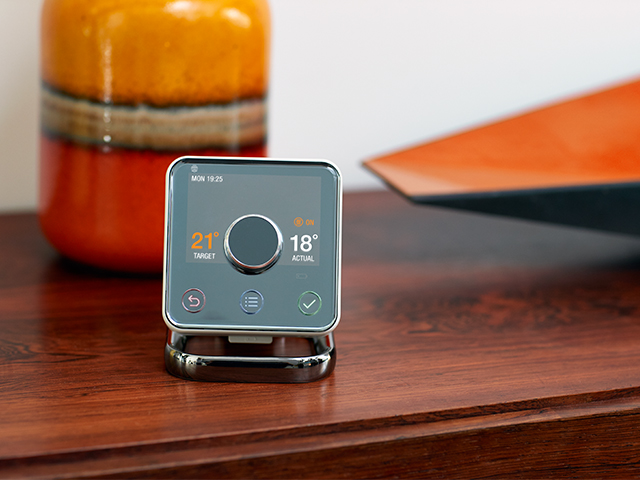
Photo: Hive
Built-in systems
Heating can now be integrated into the fabric of your building. Developments in both wet and dry systems allow you to turn your walls, floors and even skirting boards into radiators. All of these hidden options run at lower temperatures and are energy efficient.
Ultra-thin, low-voltage, flexible meshes free up wall space, and you can even make holes in them to hang pictures. ‘Integrated systems are a space-saving option for smaller properties, eliminating the need for radiators,’ says David Holmes MD of Solar Guide.
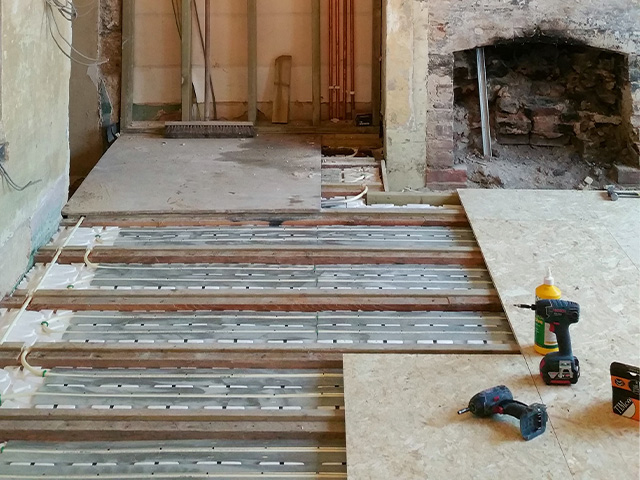
Photo: Richard Leeney

